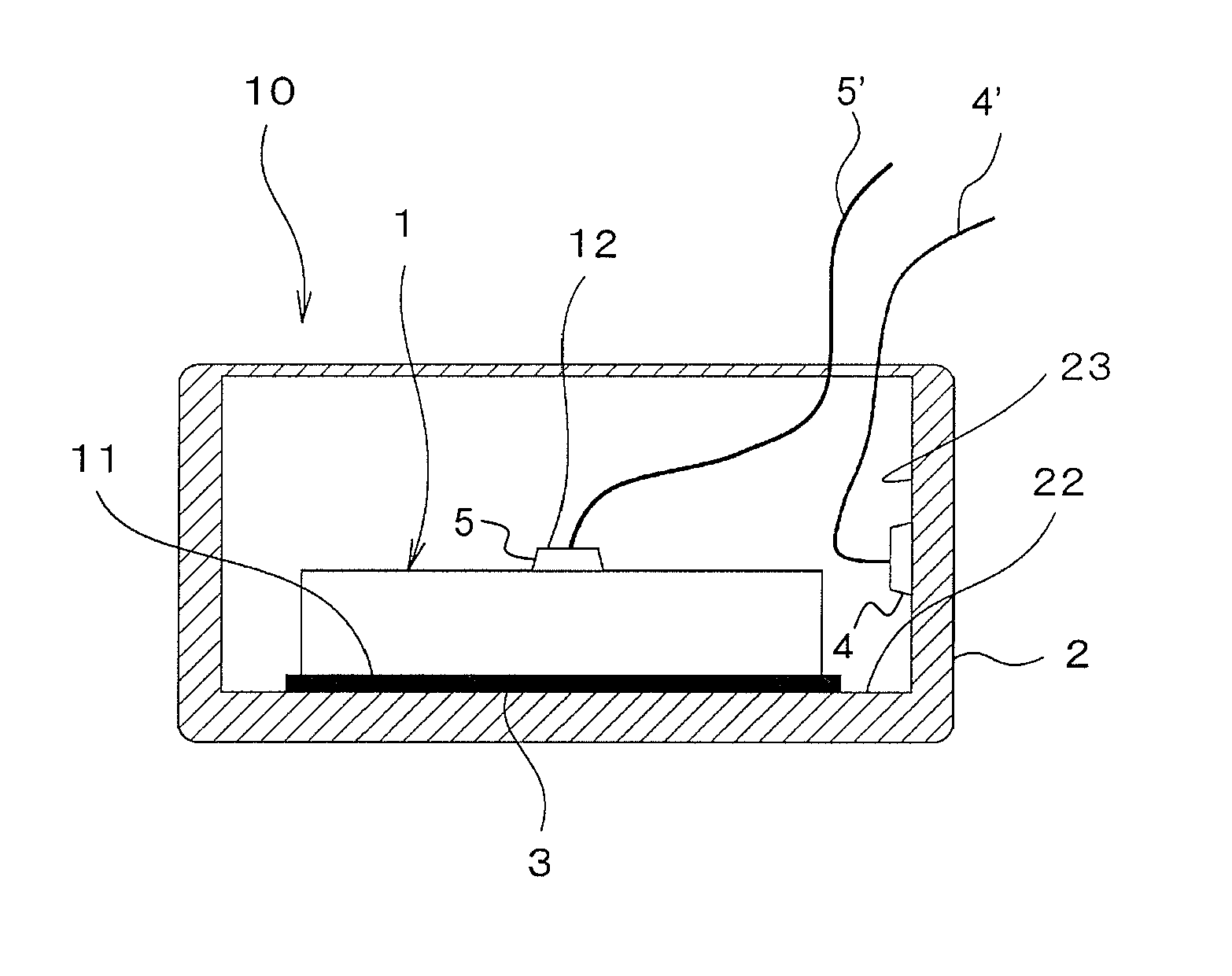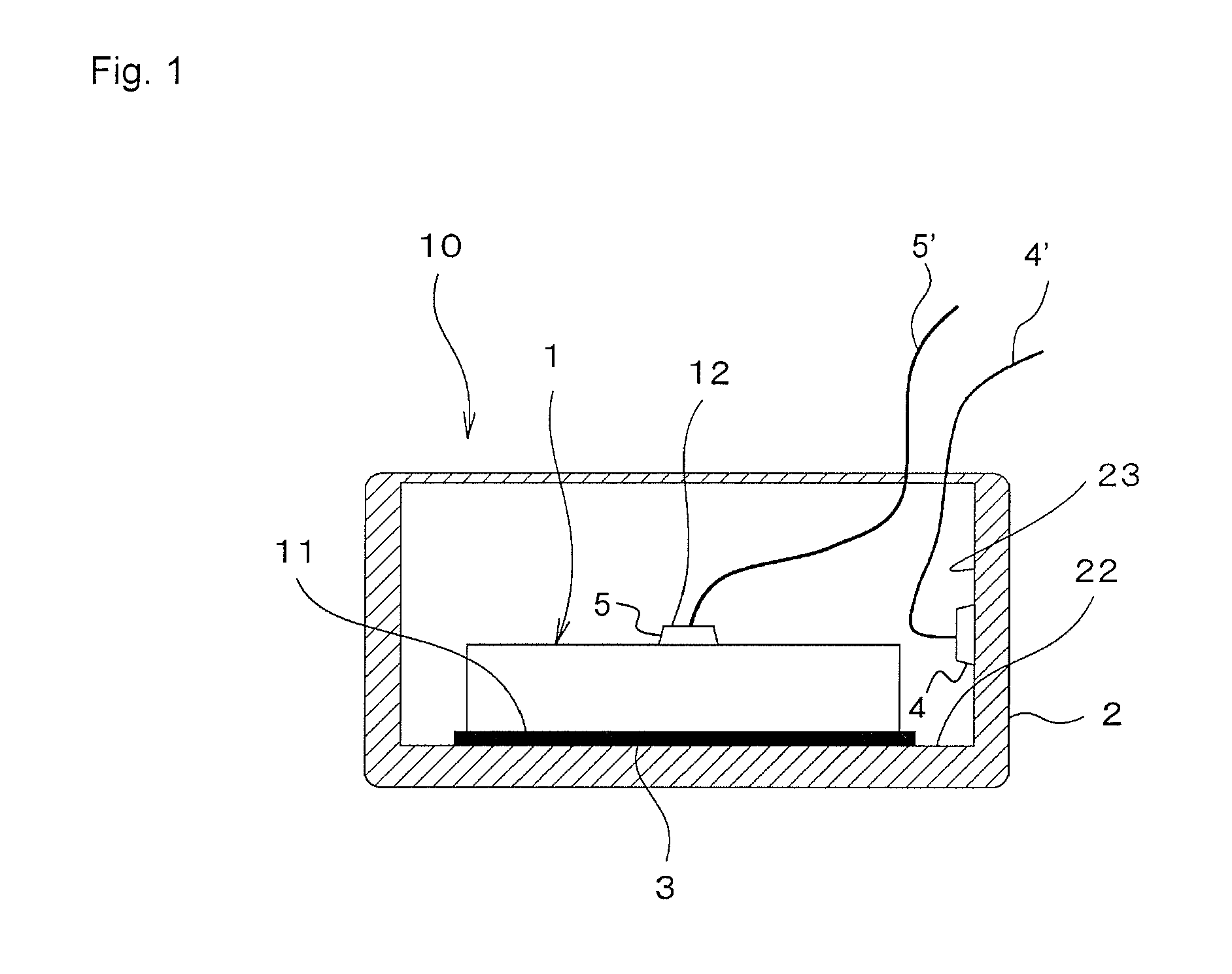Conductive resin composition, method for manufacturing electronic component using same, bonding method, bonding structure, and electronic component
a technology of conductive resin and composition, applied in the direction of non-metal conductors, connection contact material, conductors, etc., can solve the problems of high resistance value, easy impairment of electric conduction, carbon particles, etc., and achieve high conduction reliability bonding, high hardness, and reduced connection resistance
- Summary
- Abstract
- Description
- Claims
- Application Information
AI Technical Summary
Benefits of technology
Problems solved by technology
Method used
Image
Examples
example 1
[0042]FIG. 1 is a view showing an electronic component having a bonding structure of an example (Example 1) of the present invention, and FIG. 2 is an enlarged view of a main section of the electronic component in FIG. 1.
[0043]Further, FIG. 3 is a microscope photograph of a bonding structure in the electronic component in Example 1, FIG. 4 is a microscope photograph of hard spherical carbon used in a conductive resin composition in Example 1, and FIG. 5 is a microscope photograph of fine carbon particles on the surface of the hard spherical carbon.
[0044]This electronic component 10 includes a ceramic element (piezoelectric element) 1 provided with electrodes 11 and 12 on a lower face and an upper face thereof, an aluminum case 2 housing the ceramic element 1, a conductive resin composition (conductive adhesive) 3 which electrically connects and makes conduction between the electrode (first conductor in the present invention) 11 on the lower face of the ceramic element 1 and a bottom...
example 2
[0061]In Example 2, hard spherical carbon (average particle diameter: 6 μm), the surface of which was coated with pitch-derived fine carbon pieces, was used as the hard spherical carbon used in the conductive resin composition.
[0062]FIG. 8 is a microscope photograph of hard spherical carbon composing the conductive resin composition used in Example 2. The conductive resin composition was prepared in the same conditions as in Example 1 described above, but using the hard spherical carbon shown in FIG. 8.
[0063]Then, using this conductive resin composition, an electronic component element similar to the electronic component element prepared in Example 1 was prepared in the same conditions and the same manner as in Example 1.
[0064]The connection resistance between the electrode of the ceramic element (piezoelectric element) and the aluminum base material (bottom of the case) of this electronic component element was measured using a four-terminal method as in Example 1. Consequently, it ...
example 3
[0066]In Example 3, a conductive resin composition was prepared by using the same epoxy resin, the same hard spherical carbon, and the same curing agent as those in Example 1 as materials for the conductive resin composition, and varying only a mixing ratio of these compounds.
[0067]That is, the amount of the hard spherical carbon mixed with respect to 1200 g of a bisphenol A epoxy resin in Example 3 was changed to 9 g, 220 g, and 545 g to prepare these conductive resin compositions in which the content of the hard spherical carbon was 0.5% by weight, 10% by weight, and 20% by weight, respectively.
[0068]In order to evaluate the ease of application to the conductor being an object to be bonded, the viscosity of each conductive resin composition was measured. The viscosities of the respective conductive resin composition (relationship between the content of the hard spherical carbon and the viscosity of the conductive resin composition (base resin) measured before adding a curing agent...
PUM
| Property | Measurement | Unit |
|---|---|---|
| particle diameter | aaaaa | aaaaa |
| primary particle diameter | aaaaa | aaaaa |
| particle diameters | aaaaa | aaaaa |
Abstract
Description
Claims
Application Information
 Login to View More
Login to View More - R&D
- Intellectual Property
- Life Sciences
- Materials
- Tech Scout
- Unparalleled Data Quality
- Higher Quality Content
- 60% Fewer Hallucinations
Browse by: Latest US Patents, China's latest patents, Technical Efficacy Thesaurus, Application Domain, Technology Topic, Popular Technical Reports.
© 2025 PatSnap. All rights reserved.Legal|Privacy policy|Modern Slavery Act Transparency Statement|Sitemap|About US| Contact US: help@patsnap.com



